Follow Lilach
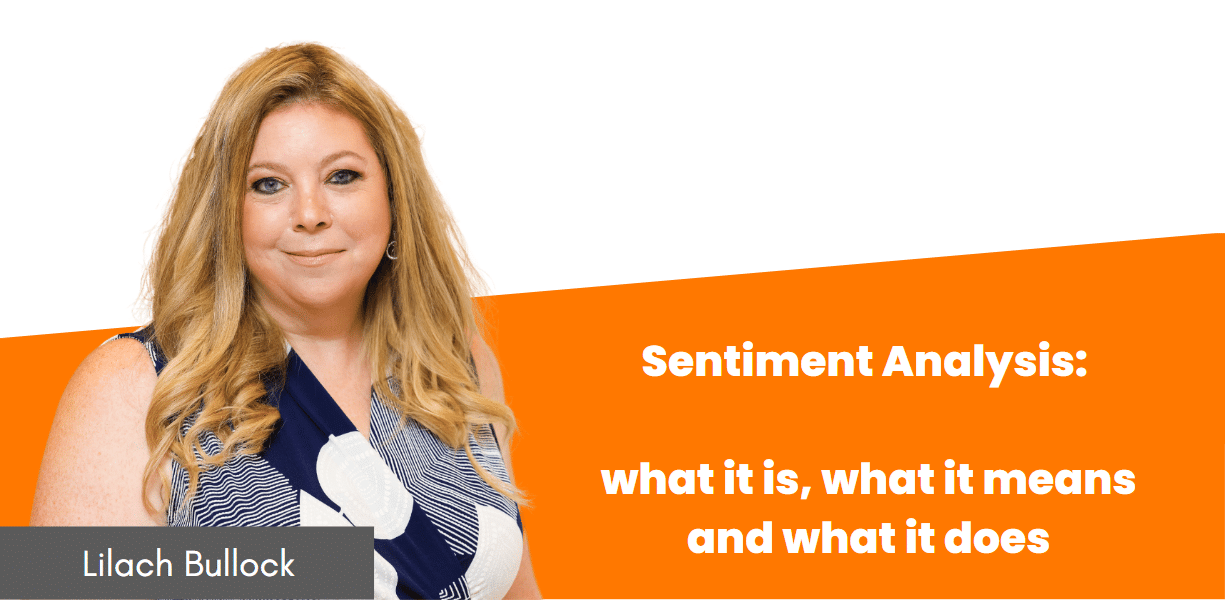
Sentiment Analysis: what it is, what it means and what it does
You might have heard of this before, and you are likely to hear it a lot more as time goes on. Sentiment Analysis is a feature on the rise, and one that has proven to be exceptionally beneficial in a whole load of business sectors. We live in a time where we communicate more digitally than personally, and so learning about the sentiment behind comments and messages can help businesses to improve, grow, and better engage with their audience. Of course, this revolutionary algorithm is not without its faults, and there are a few imperfections. Ready to learn more? All you need to do is read through my guide for the answers to “what, when, and how?”
What You Will Learn?
This article is going to feel pretty imposing, and possibly even a little intimidating because the topic sounds so complex. However, I have broken it down into manageable chunks and ensured the information is easy to digest. Here’s a quick rundown of the things you are going to read and learn about sentiment analysis:
- What it sentiment analysis
- How social listening and sentiment analysis works
- What it can do for you
- Where to find the tools
- How in-depth it is
- Its faults
- Some great examples
What is Sentiment Analysis?
It might seem like a complex thing to understand, but when you learn what it is the whole thing becomes simpler. It is the process of analyzing pieces of text in order to determine the kind of tone behind them; finding the relevant emotion. In short, the algorithm can tell you if there is a positive, negative, or neutral sentiment behind the message.
Some algorithms can go even deeper than those basic three; it all depends on what you choose. It also uses machine learning to make the results more accurate and the program easier to manage. There’s a lot more to the concept of this social listening tool though, which is what I’m going to take you through in the coming sections.
How Does Sentiment Analysis Work?
There are two levels to how sentiment analysis works, and it all depends on how comfortable you are with technology and algorithms. You can create your own program if you really know what you are doing, but otherwise, you can purchase tools and software to do it for you instead. The basics of how it works are that it uses a combination of methods and algorithms to track mentions and identify the emotion behind them.
You will find that there are three main classifications for these. The first of these is rule-based sentiment, and this works with a manually created set of rules as opposed to an automatic system. The automatic system is all about machine learning techniques, which means that it processes data and learns from it in order to create readings. The best and most effective, however, is the hybrid method. This combines both the rule and automatic systems to create an effective tool that takes the best parts of each.
This is because manual systems take a lot of time and work, and the system itself tends to remain very basic as a result because the advanced systems are difficult to maintain. The automatic systems take a lot less time and effort to maintain, but it does need help learning and cannot always grasp the depth of human emotion; which is why combining the manual and automatic processes to form a hybrid one is an optimal choice.
Twitter doesn't care about sentiment analysis, if you like or don't like something, if you tweet about, reply to a tweet about, or search a topic it will show you more of that topic
They want your anger, annoyance, possible pain as long as it drives clicks pic.twitter.com/LTiwMUgYR0
— z3dster (@z3dster) May 27, 2019
How Can Sentiment Analysis Benefit You?
Most of the data swimming around in the world are not actually structured or organised, with evidence suggesting that this number is as high as 80%. The reason for this is that most of this comes from text-based data, which means emails, social media posts, chats, and support tickets. All of these can be difficult to organise correctly, and the analysis process is mind-numbingly long as well as expensive. That’s why you have sentiment analysis, because it can make sense of all the data coming through, process it, and help you to create a more efficient process.
How else can it benefit you though? Well, there are a number of little things that build up to create bigger benefits, each of which you can find neatly listed below:
- Quick and cost-effective data processing.
- Real-Time Analysis. Live information to keep you updated and help you stay in touch with customers.
- Consistent Criteria. We can only agree on the emotional tone behind text 60% of the time, so having an algorithm clears up the issue.
- Business Success. You can identify positive and negative comments so that you can assess your position and better engage your audience.
- You can track customer reactions and how they change according to what you post, as well as address social media crises before they happen.
- Influencer Search. Find the users that are happiest with your products, as well as those that have the most engagement, to discover your next influencer.
Where Can You Find Sentiment Analysis?
Are you starting to think that sentiment analysis might be just what you and your business needs? Well, all you need now are the best places to find this handy feature. Below, you will find a list of the companies I love and trust the most when it comes to delivering a sentiment analysis service:
- Brand24 (the tool I have used for all of my examples later on)
- Talkwalker
- Hootsuite
- Social Mention
- Social Searcher
Quantitative study of how extreme Trump’s rhetoric is.
“I asked https://t.co/1jV1FxgFu6, a data analytics company that analyzes language with artificial intelligence, to do a sentiment analysis of Trump’s speech compared with that of his predecessors.”
Spoiler: TWICE as extreme https://t.co/aAQnG7HFZe
— Physics and Politics (@bellport_phys) May 25, 2019
What’s the Scope of Sentiment Analysis?
This is all about how deep sentiment analysis goes, as sometimes a plain old positive and negative just aren’t enough. There are three different levels of scope (or depth) that can be applied to sentiment analysis:
- Document Level. Sentiment within an entire document.
- Sentence Level. Sentiment of a single sentence.
- Sub-Sentence Level. Sentiment of sub-expressions within a sentence.
Furthermore, there are even deeper levels of sentiment analysis to be examined, and these are ideal for getting an even better look at the way in which this process works and just how far it can go. While you will find that the majority of systems focus on polarity, there are some that go into specific emotions and intentions; the latter of which refers to interested or uninterested. Here’s a close look at it:
Fine-Grained. This works with polarity, but it will also provide you with more detail. So, instead of just positive and negative, you also get very positive and very negative. This provides further insight into how your customers are feeling.
Emotion Detection. This uses a more complex form of machine learning to tell you the specific emotion behind each piece of text. It can be used with or without the polarity feature, and it can have some issues with sarcasm (just like me).
Aspect-Based. Another that uses polarity, but it focuses on the emotions that relate to a specific feature of a product or business as opposed to the general feeling.
Intent. This one looks at the intention behind the message; the text being written as opposed to what is being said. This way, it can tell you if someone is looking for help or making a complaint. It is also the system with the smallest margin for error.
Multilingual. This is the best form for companies that have an international presence, although it can be trickier to use. You might even need to code some of it yourself, but you should find most of it ready to download online.
Is Sentiment Analysis Actually Accurate?
This is the big question, and probably the one that is asked the most when people start to question sentiment analysis. Most of the time, you will find that sentiment analysis has an accuracy rating between 70% and 80%, which is actually quite impressive considering it is mostly processed by computer algorithms.
Of course, there is going to be a good chunk of room for error because context and tone cannot always be correctly calculated when typed instead of spoken. To ensure your readings are as accurate as possible, you will need to put some manual work in at times, but it really is worth it to get a good idea of how your customers feel about you and your company.
What are the Issues Sentiment Analysis Faces?
It’s not a perfect system, unfortunately, which is something that I have mentioned a few times now. There are hopes that as technology progresses, it will become even better, but until then they remain a slight challenge. Here are some of the issues that sentiment analysis seems to have:
– Context. The programme will often struggle with taking the context of a post into account, as well as words and expressions that are being used. This can change the polarity of the result after the scan, and while you can manually reduce the errors by adding context into the code, this is a lot of work.
– Sarcasm. A lot of humans find this hard to detect, and so you can imagine how difficult machines must find it. Irony is also difficult for the algorithms to pick up, and this can cause incorrect polarities to be displayed as a result; skewing the overall readings. It can’t be programmed in either, as it is too difficult to master and detect.
– Comparisons. This is where a product is compared to one from a competitor or an older one that you released, and the algorithm can get a little confused here at times. This is because it comes back to context and how it can be hard for the machine to read. While there are some comparisons that don’t rely on context, there are those that do, and so you may need to scroll through a number of them manually.
– Emoji Language. Both the western and eastern forms of Emoji language can be very difficult for sentiment analysis programmes to read, but you can actually get around this one. All you need to do is pre-process the algorithm so that it registers all of the images in advance. A little time consuming, but also worth it for the improved accuracy.
– Neutrality. The issue with this is that neutral text is really difficult to determine because it is so subjective in terms of the tone. Neutral information can come in a variety of forms as well, including the desires and wishes of customers, objective texts that have no real opinions, and information that is just completely irrelevant.
Sentiment Analysis: Business Examples
This is my favourite part because I get to show you all some really fun examples of sentiment analysis at work. There’s a lot to go through, but I have picked the best ones from each of my chosen areas:
- Cadbury
- Dyson
- Trump
- Putin
All four examples are quite divisive topics that can lead to hot debate, and these are the best to use as examples because you get to see some great polarity. I’ll take you through my selected images and give you a little more context for each of them, but please enjoy my little collection.
Here are a few sentiment analysis results for Putin: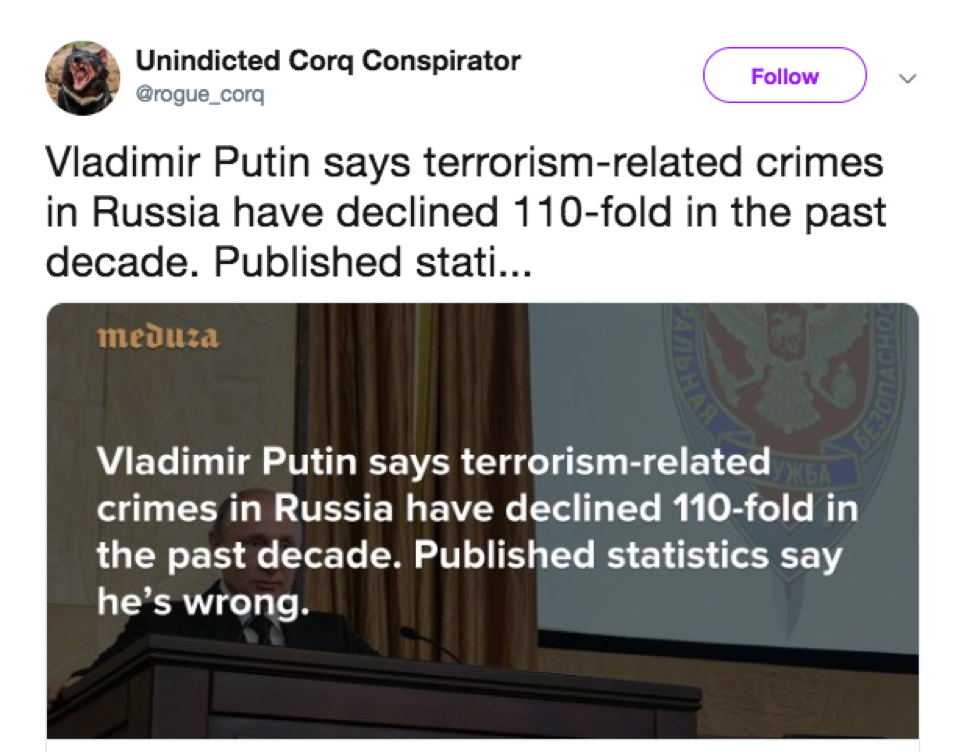

In the West, commentators and political officials are crying out for more government control of the Internet and social media to protect from fake news –– Worry not, that agenda has been carried out by…Vladimir Putin! https://t.co/SF4W9oohdq
— Yaël Ossowski (@YaelOss) March 20, 2019
In the West, commentators and political officials are crying out for more government control of the Internet and social media to protect from fake news –– Worry not, that agenda has been carried out by…*Vladimir Putin*! https://arstechnica.com/?post_type=post&p=1475579 …
Here are a few sentiment analysis results for Trump:
Seriously….. Tim apple? You had to hold a press conference to correct a word you claimed to have miss said on the national stage standing next to Vladimir Putin….
You’re just legit such an insecure crybaby all you do is project what you are on to others#maga ?!?!?!?
— Tommy Herrera (@CulledCub) March 18, 2019
Seriously….. Tim apple? You had to hold a press conference to correct a word you claimed to have miss said on the national stage standing next to *Vladimir Putin*…. You’re just legit such an insecure crybaby all you do is project what you are on to others #maga ?!?!?!?
Donald Trump, often referred to as Mrs. Vladimir Putin, appears to insult his senior advisor’s husband and his senior advisor is working hard to figure out a way to blame Obama for it!?!
— Road Signs (@ZoomPoliticum) March 20, 2019
Donald Trump, often referred to as Mrs. *Vladimir Putin*, appears to insult his senior advisor’s husband and his senior advisor is working hard to figure out a way to blame Obama for it!?!
Flashback: Donald Trump claims ‘very nasty’ business deal with Robert Mueller https://t.co/vIB9IUcCob
— Deb Singer (@debsinger2) March 20, 2019
Flashback: *Donald Trump* claims ‘very nasty’ business deal with Robert Mueller https://www.today.ng/news/world/donald-trump-claims-nasty-business-deal-robert-mueller-137085 …
Below, you can see the influencer score for Trump; a good example of what to expect from this feature.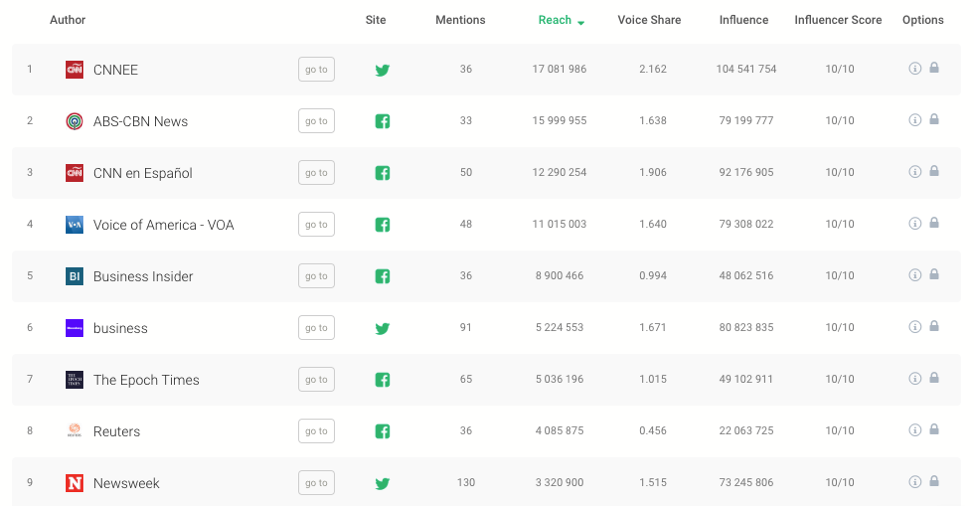
Mentions for Trump and Putin over the last 30 days. These can be seen in the next three images.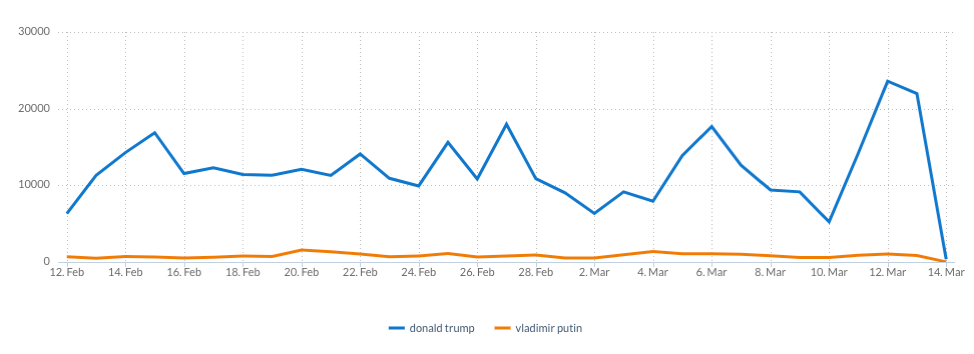
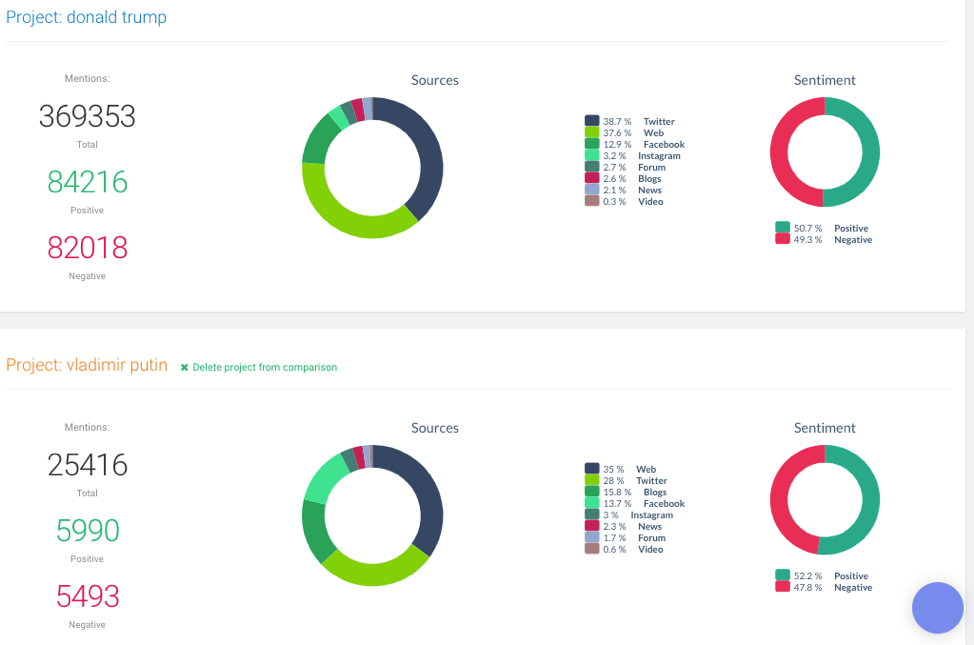
A few sentiment analysis results for Dyson:


A few sentiment analysis results for Cadbury: The below image is a good example of sarcasm within sentiment analysis. Even as a human, we have to wonder if it was a positive or negative comment.
The below image is a good example of sarcasm within sentiment analysis. Even as a human, we have to wonder if it was a positive or negative comment.

To Conclude
Now that you have read through my detailed and excellent guide on sentiment analysis, I hope you understand more about the topic and how it works. It might feel like a heavy process and a lot of information to take in, but in actual fact, the whole concept is surprisingly simple. It’s amazing for helping you to learn more about what your customers are thinking as well as the ways in which you can better engage with them so that you can find out more about your audience.
Yes, there are a few faults with the algorithm, especially as it is not always accurate when it comes to detecting the emotion behind a particular word or comment, and context can be an issue. Sometimes, a positive message can be deemed negative because it uses a word that the tool registers as being bad, and this is why manual scanning needs to be undertaken. Otherwise, it’s a fantastic and beneficial feature that everyone should be using.
About the author:
Throughout his career, Milosz has been consulting and devising growth strategies for small and start-up businesses, particularly within financial services. Prior to the acquisition of Chilli Fruit Web Consulting, Milosz has been involved in Plus Guidance (an early-stage UK tech start-up, now acquired) and Sigma Digital Marketing Agency based in Oxfordshire.

Follow Lilach















